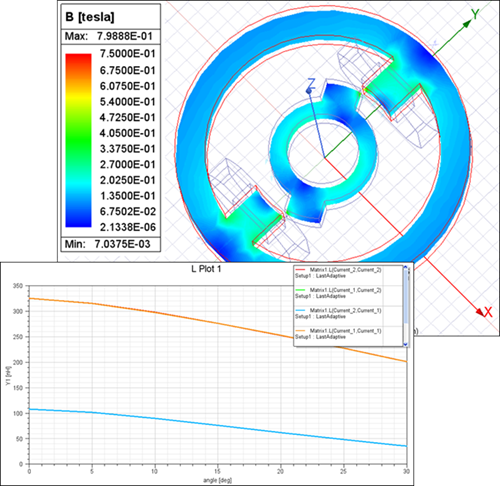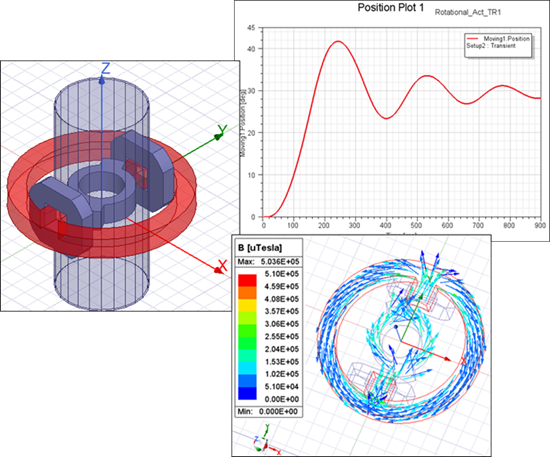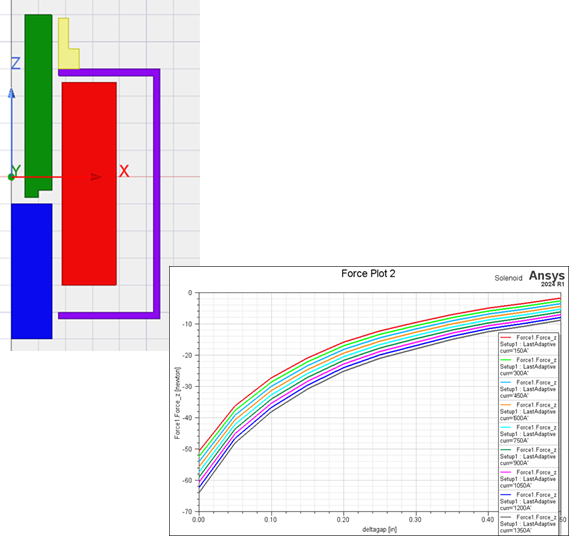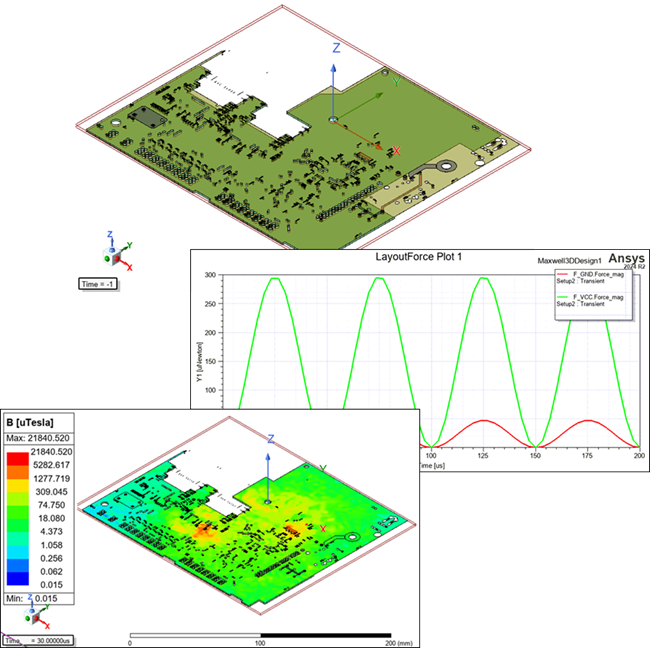Maxwell Getting Started Guides
Maxwell documentation includes the following Getting Started Guides:
- 3D Rotational Actuator with Parametrics
- Draw a geometric model
- Modify a model’s design parameters
- Assign variables to a model’s design parameters
- Specify solution settings for a design
- Validate a design’s setup
- Run a Maxwell simulation
- Plot the magnetic flux density vector
- Run a parametric analysis
- Create an animation using saved parametric field data.
- 3D Transient Rotational Actuator Problem with Motion
- Import a geometric model
- Modify a model’s design parameters
- Assign variables to a model’s design parameter
- Specify solution settings for a design
- Validate a design’s setup
- Run a Maxwell simulation
- Plot the magnetic flux density vector
- Include motion in the simulation
- 2D Magnetostatic Solenoid Problem with Parametrics
- Draw a geometric model
- Modify a model’s design parameters
- Assign variables to a model’s design parameters.
- Specify solution settings for a design
- Validate a design’s setup
- Run a Maxwell 2D simulation
- Plot the simulation results
- Set up a parametric sweep analysis varying multiple solution variables
- Plot families of curves of the parametric results
- ECAD Integration with Maxwell 3D
- Assign ports in a 3D layout in HFSS
- Define a mesh on a 3D layout
- Import a 3D layout into a Maxwell 3D transient design
- Create a region and assign a boundary condition
- Assign excitations.
- Validate a design’s setup
- Run a Maxwell simulation
- Plot layout force and terminal current
- Export harmonic force data
- Combine a 3D layout with an MCAD component
- Skin Depth Seeding
This Getting Started Guide is written for Maxwell beginners and experienced users who would like to quickly familiarize themselves with the capabilities of Maxwell 3D. This guide leads you step-by-step through creating, solving, and analyzing the results of solving a 3D rotational actuator magnetostatic problem.

By following the steps in this guide, you will learn how to perform the following tasks:
This Getting Started Guide is written for Maxwell beginners and experienced users who would like to quickly familiarize themselves with the capabilities of Maxwell 3D. This guide leads you step-by-step through creating, solving, and analyzing the results of solving a transient rotational actuator problem with motion. This Getting Started Guide builds on the problem and techniques presented in the 3D rotational actuator magnetostatic problem.

By following the steps in this guide, you will learn how to perform the following tasks:
This Getting Started Guide is written for Maxwell beginners and experienced users who would like to quickly familiarize themselves with the capabilities of Maxwell 2D. This guide leads you step-by-step through creating, solving, and analyzing the results of solving a 2D asymmetric solenoid magnetostatic problem with parametric analysis.

By following the steps in this guide, you will learn how to perform the following tasks:
This Getting Started Guide is written for Maxwell beginners and experienced users who would like to integrate HFSS 3D layouts into the Maxwell simulation environment. This guide leads you step-by-step through importing a 3D layout into Maxwell, preparing it for simulation, and then postprocessing the results. It also shows you how to incorporate an MCAD component into an imported layout.

By following the steps in this guide, you will learn how to perform the following tasks:
By following the steps in this guide, you will learn to use Skin Depth-Based mesh refinement for HFSS or Maxwell models to specify a number of layers and a skin depth as an alternative to modeling physical layers. The guide also shows how to use mesh plots with cut planes as well as a repurposed Model Analysis dialog box to view and obtain statistics on layering success.
